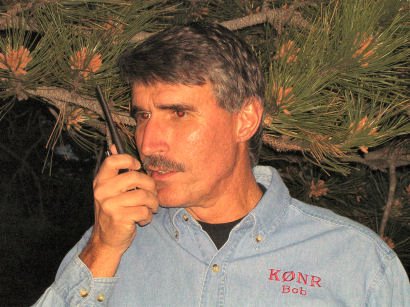FCC Releases Long-Awaited "Omnibus" Amateur Radio Report and Order
 From the ARRL web site:
From the ARRL web site:NEWINGTON, CT, Oct 11, 2006 -- Ending a protracted waiting period, the FCC's Report and Order (R&O) in the so-called "omnibus" Amateur Radio proceeding, WT Docket 04-140, was adopted October 4 and released October 10. In it, the FCC adopted nearly all of the changes it had put forth in its 2004 Notice of Proposed Rulemaking (NPRM) in the proceeding.
The complete FCC report and order is available online here.
One of the key rule changes for the VHF community is that auxiliary operation will soon be allowed on the 2-Meter band. Currently, auxiliary operation is limited to the 222 MHz band and higher.
Part 97.3 defines auxiliary operation in this manner:
(7) Auxiliary station. An amateur station, other than in a message forwarding system, that is transmitting communications point-to-point within a system of cooperating amateur stations.In everyday language, we might call this a link, as in a control link for a repeater system or a link between two repeaters. Amateur radio stations that are connected to the Internet, using EchoLink or a similar system, are also auxiliary stations.
The existing FCC rules on Auxiliary Stations are:
§97.201 Auxiliary station.
(a) Any amateur station licensed to a holder of a Technician, Technician Plus, General, Advanced or Amateur Extra Class operator license may be an auxiliary station. A holder of a Technician, Technician Plus, General, Advanced or Amateur Extra Class operator license may be the control operator of an auxiliary station, subject to the privileges of the class of operator license held.
(b) An auxiliary station may transmit only on the 1.25 m and shorter wavelength bands, except the 219-220 MHz, 222.000-222.150 MHz, 431-433 MHz and 435-438 MHz segments.
(c) Where an auxiliary station causes harmful interference to another auxiliary station, the licensees are equally and fully responsible for resolving the interference unless one station's operation is recommended by a frequency coordinator and the other station's is not. In that case, the licensee of the non-coordinated auxiliary station has primary responsibility to resolve the interference.
(d) An auxiliary station may be automatically controlled.
(e) An auxiliary station may transmit one-way communications.
The FCC will be modifying paragraph (b) to be:
(b) An auxiliary station may transmit only on the 2 m and shorter wavelength bands, except the 144.0-144.5 MHz, 145.8-146.0 MHz, 219-220 MHz, 222.00-222.15 MHz, 431-433 MHz, and 435-438 MHz segments.This means that auxiliary operation will be allowed on 2 Meters but the weak-signal portion below 144.5 MHz and the 145.8-146.0 MHz satellite subband are protected. This opens the way for EchoLink and other auxiliary stations to use the popular 2-Meter band.
Is this a good thing? Maybe, maybe not. This could be a positive change that allows for greater operating flexibility. If hams use good judgment on the frequencies they use, it will probably work just fine. On the other hand, it could result in a bunch of uncoordinated auxiliary stations causing interference to other radio uses. As usual in ham radio, the end result will be determined by the amateur radio community (and not FCC regulations).
73, Bob K0NR



0 Comments:
Post a Comment
Links to this post:
Create a Link
<< Home